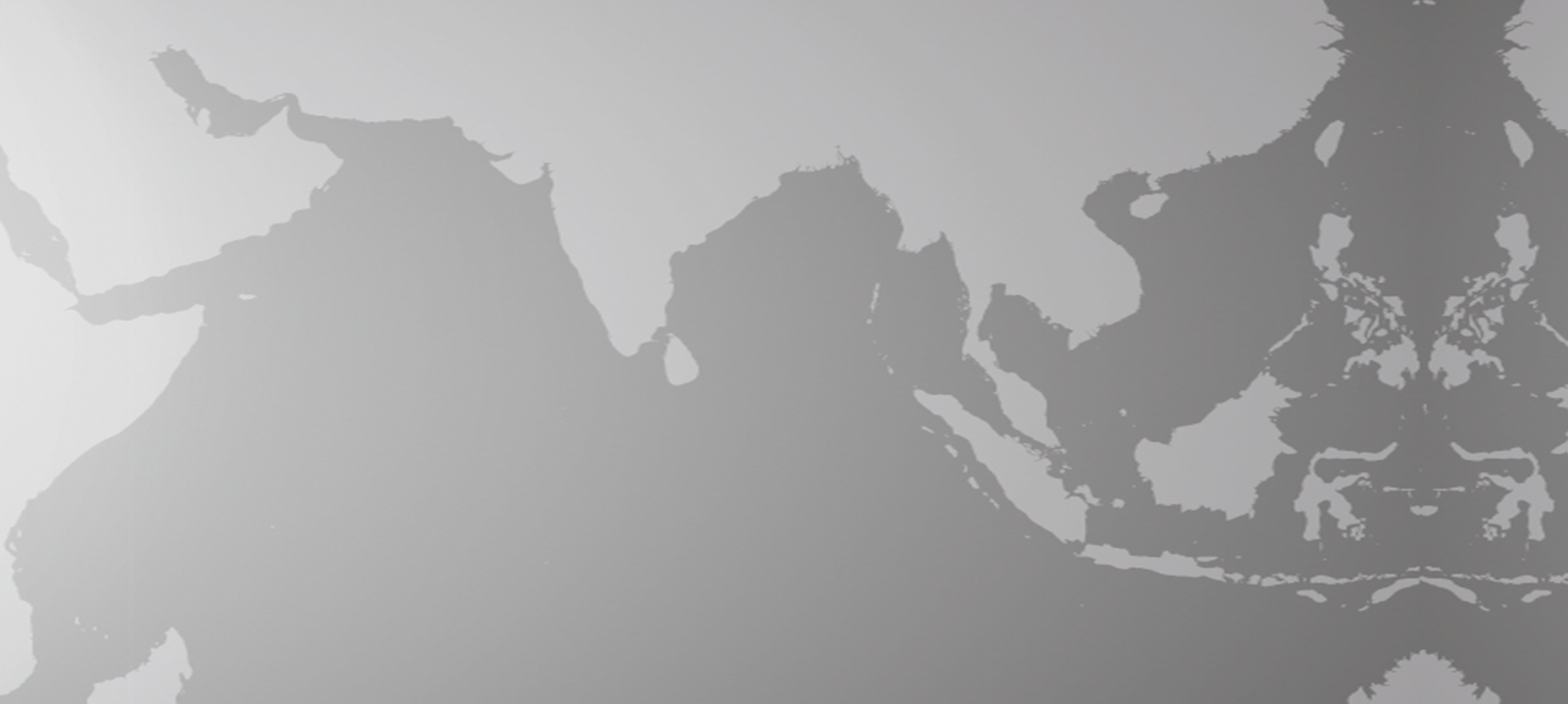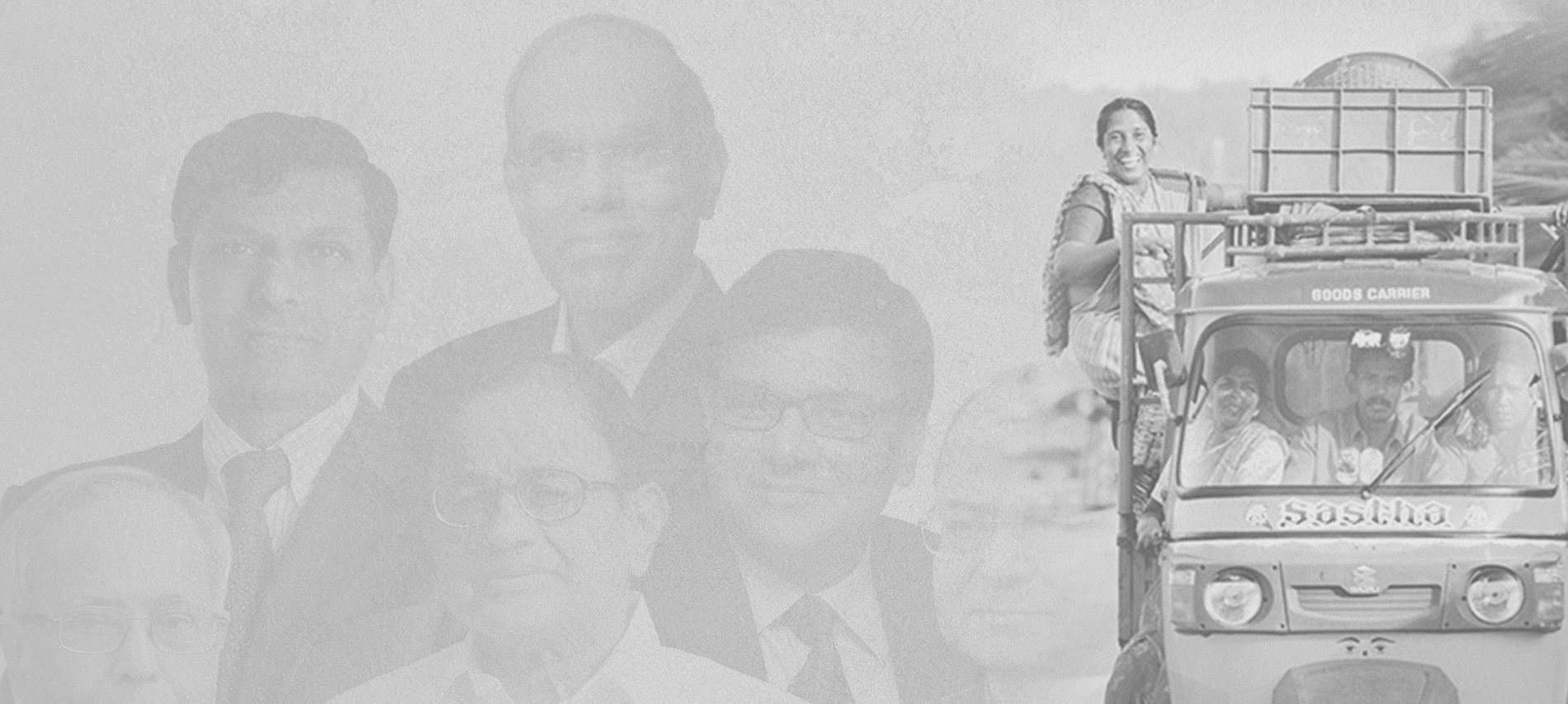Paranjoy Guha Thakurta is a senior journalist. Till recently, he was the editor of the Economic and Political Weekly. Shinzani Jain is an independent researcher and law graduate from Indian Society Law College, Pune. This book, Thin Dividing Line: India, Mauritius and Global Illicit Financial Flows, looks at the India-Mauritius Double Taxation Avoidance Agreement in the global context of growing illicit financial flows.
Let’s look at 5 astounding facts about the tax havens.
——————————————————————–
In recent times, the governments of many developed and developing countries have been seeking to discourage the use of tax havens. One of the most talked-about such moves is the Base Erosion and Profit Shifting (BEPS) initiative of the Organization for Economic Cooperation and Development (OECD). The OECD is a grouping of some of the richest countries in the world. They also stated that there was ‘no economic justification’ for tax havens’ existence, as they diminished the power of governments to collect taxes.
They also stated that there was ‘no economic justification’ for tax havens’ existence, as they diminished the power of governments to collect taxes. The Tax Free Tour, a documentary by Marije Meerman, that covers useful ground, begins by detailing the round-tripping of funds carried out by multinational companies such as Apple. The figures are startling: James S. Henry is interviewed in the film about the details of Apple’s evasion of taxes, and he claims that it sells 20 million iPads a year for about $500 each (which comes to about $10 billion) while paying Chinese labourers $800 million to make these products.
The Tax Free Tour, a documentary by Marije Meerman, that covers useful ground, begins by detailing the round-tripping of funds carried out by multinational companies such as Apple. The figures are startling: James S. Henry is interviewed in the film about the details of Apple’s evasion of taxes, and he claims that it sells 20 million iPads a year for about $500 each (which comes to about $10 billion) while paying Chinese labourers $800 million to make these products.
 It is also common knowledge that Mauritius hosts several distinguished lawyers and accountants from India itself who help set up shell companies and hide the trail of beneficial ownership through processes known as ‘layering’ and round-tripping, wherein illicit funds are transmitted through multiple tax havens and ultimately the black money thus gets ‘laundered’ white.
It is also common knowledge that Mauritius hosts several distinguished lawyers and accountants from India itself who help set up shell companies and hide the trail of beneficial ownership through processes known as ‘layering’ and round-tripping, wherein illicit funds are transmitted through multiple tax havens and ultimately the black money thus gets ‘laundered’ white.
 On 2 October 2013, the Federal Bureau of Investigation (FBI) of the United States had arrested Ulbricht, who went by the moniker Dread Pirate Roberts. He was the elusive creator and proprietor of a huge illegal online market Silk Road. Ulbricht was a small part of a much larger network of a shadow economy. On the other hand, take the case of Jack Ma, said to be one of the richest men in the world and his brainchild, the Alibaba corporate empire. In May 2016, the net worth of the Alibaba group was $23.3 billion. His corporate conglomerate was able to become gigantic thanks to the ‘ease of doing business’ out of the Cayman Islands, a 264-sq. km British overseas territory comprising three islands located in the western Caribbean Sea south of Cuba.
On 2 October 2013, the Federal Bureau of Investigation (FBI) of the United States had arrested Ulbricht, who went by the moniker Dread Pirate Roberts. He was the elusive creator and proprietor of a huge illegal online market Silk Road. Ulbricht was a small part of a much larger network of a shadow economy. On the other hand, take the case of Jack Ma, said to be one of the richest men in the world and his brainchild, the Alibaba corporate empire. In May 2016, the net worth of the Alibaba group was $23.3 billion. His corporate conglomerate was able to become gigantic thanks to the ‘ease of doing business’ out of the Cayman Islands, a 264-sq. km British overseas territory comprising three islands located in the western Caribbean Sea south of Cuba.


Tag: Bulletin Board
Six Things You Didn't Know About Judy Moody
Judy Moody, from the international bestselling series created by Megan McDonald, is a third grader with plenty of attitude and a mood for every occasion. You know she is funny, intelligent and caring, but here are six things we bet you don’t know about Judy Moody.
Get to know them here.
——————————







Ramachandra Guha and some thoughts on Politics in India
Now based in Bangalore, Ramachandra Guha has previously taught at Yale, Stanford, Oslo, and the London School of Economics. His books include a collection of essays, Patriots and Partisans, Savaging the Civilized: Verrier Elwin, His Tribals, and India (1999) and Democrats and Dissenters. Guha’s awards include the Leopold-Hidy Prize of the American Society of Environmental History, the Sahitya Akademi Award, and the Padma Bhushan. His books and essays have been translated into more than twenty languages. In 2008, and again in 2013, Guha featured on Prospect Magazine’s list of the world’s most influential thinkers.
On his 60th birthday, we celebrate this iconic writer with his polemic quotes on Politics & India.
——————————






It’s Time to Leaf Through Our April BookShelf
April 14th celebrated as Ambedkar Jayanti – an annual festival which commemorates the memory of the national leader, Dr. B.R. Ambedkar who was a champion for Dalit rights and an icon for the downtrodden.
Here is a collection of books that highlight Caste and its injustices that formulated many of the past & present deep-rooted fissures in the country.
——————————-
Ambedkar: Towards an Enlightened India by Gail Omvedt  In this concise biography, Gail Omvedt, presents Ambedkar’s struggle to be educated in order to overcome the stigma of untouchability. The biography puts the man and his times in context by exploring Ambedkar as —a scholar, lawyer, an economist, religious leader and an intellectual. The book aims to explain to a new generation of readers how Ambedkar became a national leader and an icon of the dispossessed.
In this concise biography, Gail Omvedt, presents Ambedkar’s struggle to be educated in order to overcome the stigma of untouchability. The biography puts the man and his times in context by exploring Ambedkar as —a scholar, lawyer, an economist, religious leader and an intellectual. The book aims to explain to a new generation of readers how Ambedkar became a national leader and an icon of the dispossessed.
Interrogating Caste : Understanding Hierarchy and Difference in Indian society by Dipankar Gupta
 The caste system has conventionally been perceived by scholars as a hierarchy based on the opposition of purity and pollution. Challenging this position, leading sociologist Dipankar Gupta argues that any notion of a fixed hierarchy is arbitrary. It is, in fact, the mechanics of power—economic and political, that set the ground rules for caste behaviour. Provocative and finely argued, Interrogating Caste is a remarkable work that provides fresh insight into caste as a social, political and economic reality.
The caste system has conventionally been perceived by scholars as a hierarchy based on the opposition of purity and pollution. Challenging this position, leading sociologist Dipankar Gupta argues that any notion of a fixed hierarchy is arbitrary. It is, in fact, the mechanics of power—economic and political, that set the ground rules for caste behaviour. Provocative and finely argued, Interrogating Caste is a remarkable work that provides fresh insight into caste as a social, political and economic reality.
Unseen: The Truth about India’s Manual Scavengers by Reenu Talwar, Vandana Singh
 In many parts of the country, the inhuman practice of manual scavenging continues to thrive in spite of a law banning it. Moreover, the people forced to carry out this degrading work remain invisible to the rest of us, pushed to the margins of society without any recourse to help or hope. Award-winning journalist Bhasha Singh turns the spotlight on this ignored community. In Unseen, based on over a decade of research, she unveils the horrific plight of manual scavengers across eleven states in the country.
In many parts of the country, the inhuman practice of manual scavenging continues to thrive in spite of a law banning it. Moreover, the people forced to carry out this degrading work remain invisible to the rest of us, pushed to the margins of society without any recourse to help or hope. Award-winning journalist Bhasha Singh turns the spotlight on this ignored community. In Unseen, based on over a decade of research, she unveils the horrific plight of manual scavengers across eleven states in the country.
Caste: Its 20th Century Avatar by MN Srinivas
 As India attempts to modernize and arrive into the twenty-first century, the issue of caste takes an overwhelming importance. The essays in this volume, each authored by an expert on the subject, include a stimulating assessment of the role of women in perpetuating caste; incisive analyses of the relationship between caste and the economy and between caste and Hinduism and other related topics.
As India attempts to modernize and arrive into the twenty-first century, the issue of caste takes an overwhelming importance. The essays in this volume, each authored by an expert on the subject, include a stimulating assessment of the role of women in perpetuating caste; incisive analyses of the relationship between caste and the economy and between caste and Hinduism and other related topics.
Coolie and Untouchable by Mulk Raj Anand

 Coolie portrays the picaresque adventures of Munoo, a young boy forced to leave his village to fend for himself and discover the world. His journey takes him far from home to cities like Bombay and Shimla, sweating as servant, factory-worker and rickshaw driver. It is a fight for survival that illuminates, with raw immediacy, the grim fate of the masses in pre-Partition India.
Coolie portrays the picaresque adventures of Munoo, a young boy forced to leave his village to fend for himself and discover the world. His journey takes him far from home to cities like Bombay and Shimla, sweating as servant, factory-worker and rickshaw driver. It is a fight for survival that illuminates, with raw immediacy, the grim fate of the masses in pre-Partition India.
In Untouchable, Bakha is a young man, proud and even attractive, yet nonetheless he is an outcast in India’s caste system: an Untouchable. This novel describes a day in the life of Bakha, sweeper and toilet-cleaner, as he searches for a meaning to the tragic existence he has been born into – and comes to an unexpected conclusion.
Mulk Raj Anand is among the twentieth century’s finest Indian novelists writing in English.
The Taming of Women by P. Sivakami

As Anandhayi gives birth to her fifth child downstairs, upstairs her husband Periyannan sleeps with a woman he has summoned to spend the night with him. Women of many generations live in that house at the end of the road and the tyrannical and charismatic Periyannan is always trying to bring them under his control. Voracious in his appetite, power and sex, Periyannan is a domineering antagonist to the tender but tenacious Anandhayi. The book is guaranteed to leave the reader simultaneously amused and devastated.
Dalit Millionaires: 15 Inspiring Stories by Milind Khandekar Reenu Talwar, Vandana Singh

The book documents the lives of fifteen people who never imagined affording one meal a day, they never dreamed of feeling the leather seats in a car and today all of them stand as sole owners of a fortune that will last for the next five generations. Milind Khandekar is determined to inspire people to pursue their way to riches. According to Khandekar, you don’t need ancestral properties, famous forefathers, family heirlooms or to be an heir to a million dollar worth fortune to be successful. All you need to do is dream to make it big.
Defying the Odds : The Rise of Dalit Entrepreneurs by Devesh Kapur, D. Shyam Babu & Chandra Bhan Prasad
 Defying the Odds profiles the phenomenal rise of twenty Dalit entrepreneurs, the few who through a combination of grit, ambition, hustle—and some luck—have managed to break through social, economic and practical barriers. These inspiring stories capture the difficult circumstances Dalits found themselves in as well as their extraordinary steadfastness, while also bringing light to the possibilities of entrepreneurship as a tool of social empowerment.
Defying the Odds profiles the phenomenal rise of twenty Dalit entrepreneurs, the few who through a combination of grit, ambition, hustle—and some luck—have managed to break through social, economic and practical barriers. These inspiring stories capture the difficult circumstances Dalits found themselves in as well as their extraordinary steadfastness, while also bringing light to the possibilities of entrepreneurship as a tool of social empowerment.
Behenji (on Mayawati) by Ajoy Bose
 Mayawati has changed the face of politics in India as a woman belonging to the most crushed community known to mankind, built her way through the heat and dust of elections to rule two hundred million people. Not only has she been the Chief Minister four times, but she has done so by overturning the established electoral traditions of a state that virtually invented modern Indian politics. With her in-your-face political style, unabashed display of accumulated wealth, she is, perhaps, the most enigmatic Indian politician for decades.
Mayawati has changed the face of politics in India as a woman belonging to the most crushed community known to mankind, built her way through the heat and dust of elections to rule two hundred million people. Not only has she been the Chief Minister four times, but she has done so by overturning the established electoral traditions of a state that virtually invented modern Indian politics. With her in-your-face political style, unabashed display of accumulated wealth, she is, perhaps, the most enigmatic Indian politician for decades.
Kanshiram: Leader of Dalits by Badri Narayan

Venerated as a dalit icon, Kanshiram is regarded as being next to Ambedkar today. This book illuminates Kanshiram’s journey, from his early years in rural Punjab to his launching BAMCEF, an umbrella organization uniting backward castes, scheduled tribes, dalits and minorities, and eventually the Bahujan Samaj Party in 1984. Narayan highlights the turn Kanshiram gave to Ambedkar s ideas. Unlike Ambedkar, who sought its annihilation, Kanshiram saw caste as a basis for forging a dalit identity and a source of political empowerment. Authoritative and insightful, this is a rare portrait of the man who changed the face of dalit society and, indeed, of Indian politics.
Nitish Kumar and the Rise of Bihar by Arun Sinha

The conventional wisdom in Bihar‘s political circles was that development did not win votes. Nitish Kumar challenged that assumption and changed the face of the state. Veteran journalist Arun Sinha tells the story of Nitish Kumar’s rise against the larger canvas of social and political upheaval in Bihar, exploring the emergent desire for equality that drove progressive movements from late 1960s onwards and brought about a regime change by the 1990s. After an initial association with Lalu Prasad Yadav, Nitish Kumar rejected identity politics, recognizing that Bihar had to transcend caste if it was to grow.
Savaging the Civilized by Ram Guha
 Verrier Elwin (1902-1964) was unquestionably the most influential non-official Englishman to live and work in twentieth-century India. Savaging the Civilized is both biography and history, an exploration through Elwin’s life of some of the great debates of the twentieth century: the future of development, cultural assimilation versus cultural difference, the political practice of postcolonial as opposed to colonial governments, and the moral practice of writers and intellectuals.
Verrier Elwin (1902-1964) was unquestionably the most influential non-official Englishman to live and work in twentieth-century India. Savaging the Civilized is both biography and history, an exploration through Elwin’s life of some of the great debates of the twentieth century: the future of development, cultural assimilation versus cultural difference, the political practice of postcolonial as opposed to colonial governments, and the moral practice of writers and intellectuals.
So, which book has made it to your reading list?

A Brush with Indian Art – Infographic Timeline of Indian Art
Indian art has evolved over centuries. Down the years, it has undergone tremendous change because of various factors, such as geography, culture, tradition, religion and politics. And, therefore, it is a patchwork of different forms, styles and themes.
Embark on a vivid journey on which you’ll learn about the origins and evolution of art in the country with Mamta Nainy in her book A Brush with Indian Art. With intricate black-and-white sketches by Aniruddha Mukerjee and stunning photographs of the most celebrated visuals across time, the book presents a rich primer on the different schools of art and the most significant movements in Indian art history.
Here is an infographic timeline of Indian art, as seen in the book.
—————–
Our Artsy Ancestors; Cave Paintings

The ‘A’ of Indian Art; Ajanta and Ellora

No Mini Feat; Mughal Miniatures

The Gilded Treasures; Tanjore Paintings

A Matter of Opinion; The Company School of Paintings and European Realism

Simple? Not Quite So!; The Bengal School of Art

Unfurling a Tradition; Kalighat Paintings

Art from Our Own Backyard

The New World; Meet the Moderns

What’s Next?; Meet the Contemporaries


7 Brilliant Facts from Tamal Bandhopadhyay’s Polemic Works
Tamal Bandyopadhyay, consulting editor at Mint, and adviser, strategy, at Bandhan Bank Ltd, is one of the most respected business journalists in India. He has kept a close watch on the financial sector for over two decades and has had a ringside view of the enormous changes in Indian finance and banking sectors.
With the opening of Bandhan Bank’s IPO in March where it has already raised Rs 1,342 crore, we shall be looking at 7 astounding facts from Tamal’s two polemic works: Bandhan: The Making of a Bank as well as From Lehman to Demonetization.
———————————————————-








Meet the Characters of Andaleeb Wajid’s latest, Twenty-nine Going on Thirty!
Andaleeb Wajid has published fifteen novels of which three are e-books. Andaleeb’s young adult novel When She Went Away was shortlisted for The Hindu Young World-GoodBooks Award 2017.
In her latest offering, Twenty-nine Going on Thirty, Priya is turning thirty and feeling overwhelmed by it. Living in Bengaluru with her best friend, Farida, and working as the social media head of a software firm, she’s feeling the weight of becoming a responsible thirty-year-old. Thankfully, Priya finds moral support in the fact that her friends Farida, Mini and Namrata are approaching the three-O milestone too.
Come, let’s meet these enigmatic characters.

How To Go About Dealing with Feelings? Here are Lessons You Shouldn’t Miss!
A unique series focusing on the well-being of young readers, Dealing with Feelings by Sonia Mehta feature Foggy Forest, a tiny forest inhabited by many fun little animals. These quirky creatures are always there for one another – helping each other overcome fear, anxiety, shyness and anger, together dealing with all the different feelings one goes through every day.
Here are some lessons we learnt from the books.
———————————-







Mother Earth, Sister Seed: 5 Facts De-mystifying the Old Ways
Lathika George is a writer, landscape designer, environmentalist and organic gardener. She has published articles on food, design, travel, gardening and the environment in InsideOutside, Architectural Digest, Food 52, Condé Nast Traveler, The Hindu’s BLink. In Mother Earth, Sister Seed, she looks at India’s traditional agricultural communities and the changes-some good, some not-that good, modernization and urbanization have wrought.
Here are a few facts from the book de-mystifying the old ways.
————————–






Quiz: Can You Be A CEO?
The Making of a CEO is the result of interviews and analysis of top-level CEOs across various sectors. The book has it genesis in a popular course Krishnan taught at IIMB, where the students interviewed and analysed twenty CEOs to learn how they charted a clear path to the top.
Do you have the potential to be a CEO? Here’s how you can check it out:





















